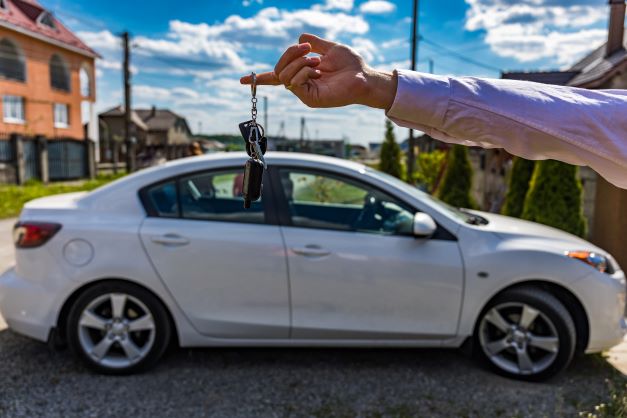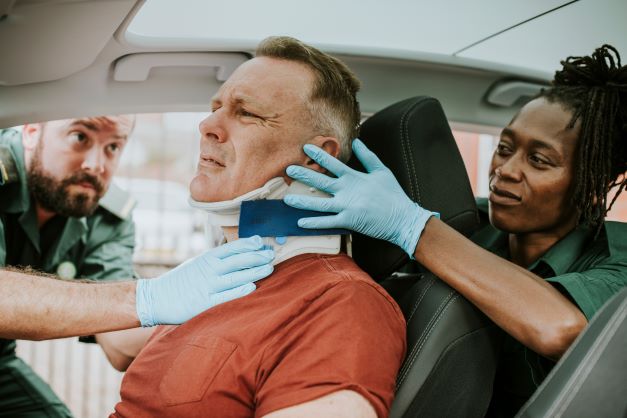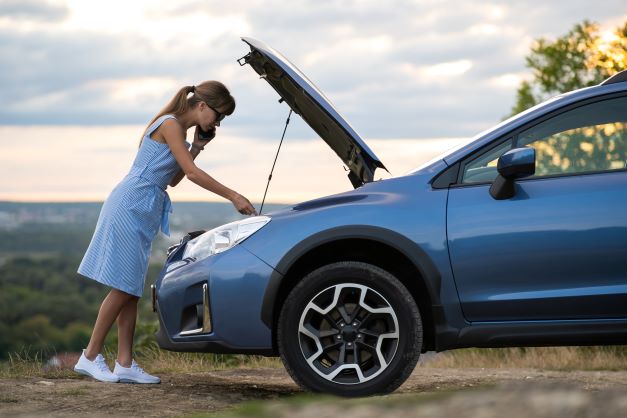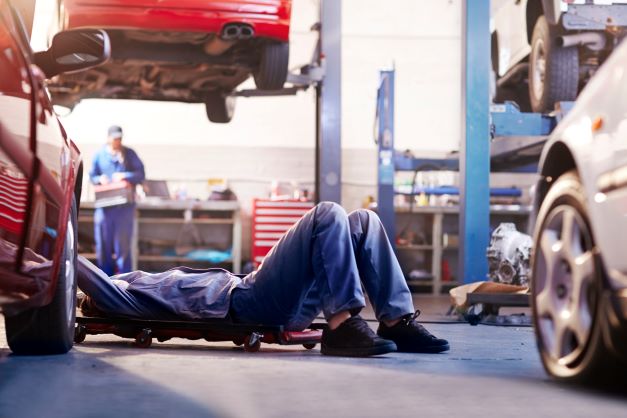What’s the best auto insurance for an older car?
- Your Good Insurance Agency
- January 31, 2023
- 2:23 pm
In most cases, an older car will require a different plan compared to a newer one in order to maximize savings.
When it comes to old car auto insurance, you’re probably wondering what the best type of insurance coverage would be or if it’s time to switch your current plan. In most cases, an older car (usually 10 years or older) will require a different plan compared to a newer one for several reasons, which we’ll get into in this article. As cars age, the value will inevitably decrease, costs for repairs or replacements may be less cost-effective, and so on.
There are several ways to adjust your coverage. These can include reducing your limits, raising your deductibles, or removing certain types of coverage. It’s important to understand which coverages are legally required in your state, and what they protect, before making any changes to your policy.
Generally, if the value of your vehicle is worth less than $5,000, we recommend older car owners switch to liability only auto insurance. It is the lowest-cost option without the additional coverages costing you more each month.

What is liability only auto insurance?
In simple terms, liability only auto insurance is a type of policy that only provides coverage for the property, vehicle, and physical damages caused to a third party when you are at fault. It will not cover your own injuries or property.
Liability-only car insurance and “minimum coverage” are different. Some states may require more insurance than just liability-only, while in other states, liability-only may be enough.
What does liability insurance cover?

Liability only insurance can be broken down into two parts: Property damage liability and bodily injury liability.
- Property damage liability will cover the damages you caused to another party’s property such as a vehicle, building, etc.
- Bodily injury liability will cover the injuries you cause to another party when you are at-fault.
Liability only insurance does not cover collision or comprehensive coverage, which covers damages to your own vehicle. This is why liability only insurance is more affordable than full coverage policies.
Nearly all states that require auto insurance will require minimum coverage like liability only to cover property damage and bodily injury. It will be up to you to decide if you want to buy higher liability limits to provide more flexibility without taking on too much cost.
When should I only have liability auto insurance?
When considering liability only insurance, there are a few things to keep in mind to see if it’s a good fit for you.
As mentioned, if the value of your car is worth less than $5,000, you’ll be a great candidate for liability only coverage since the insurance cost won’t outweigh the car’s value. If you own the vehicle 100% and there are no outstanding payments, that can also be a factor to consider. Additionally, if you’re a safe driver and you haven’t had any at-fault accidents, then this will make sense too.
If these fit your current circumstance, then what auto insurance to carry on 10 a year old car will most likely fall in the liability only category for you.
Cars 15-20 years old are cheaper to insure
(classic cars are a completely different topic).
You may have wondered, how much should auto insurance be for a 10 year old car? Or even older than 10 years. Older cars are cheaper to insure with liability-only coverage because they are worth less than newer cars (in most cases). The market value of a car is an important factor in determining how much car insurance will cost or how much is worth paying for it. The less a car is worth, the less an insurance company will have to pay out in the event of a total loss, such as a collision. Therefore, older cars that are worth less than newer cars will generally be cheaper to insure.
Another reason older cars may be cheaper to insure with liability-only coverage is that they’re less likely to be stolen. Cars that are older than a few years old are not as prone to theft as newer models because they’re not as valuable or don’t have the latest technology. Insurance companies can take things like these into account and offer lower rates, thus being able to drop things like comprehension coverage.
Older cars are less expensive to repair than newer cars, so if they’re involved in an accident and only liability coverage is provided, it can be cheaper to repair the damages yourself.
Important takeaways:
- Older cars are typically worth less
- Less likely to be stolen
- Less expensive to repair
It’s important to consider the value of your vehicle when choosing car insurance coverage, as liability-only coverage may be a cost-effective option for older cars.

Understanding the difference between full coverage auto insurance and liability only
What is the difference between a full coverage auto insurance and liability only? Let’s get into it.
“Full coverage” does not mean one specific type of insurance. It’s a combination of different types of coverage. All car insurance includes liability coverage, which pays for damages or injuries you cause to others. Full coverage also includes other types of coverage like:
- Collision coverage, which pays for damages to your car from a crash.
- Comprehensive coverage, which pays for damages to your car from non-crash events like natural disasters or theft.
- Uninsured/underinsured motorist coverage, which pays for damages if you get into an accident with someone who doesn’t have insurance.
Full coverage is more expensive than just liability insurance, which only pays for damages or injuries you cause to others and doesn’t cover your own car or injuries. On average, a full coverage policy can cost around 3x as much as a liability only policy.
Another difference between full coverage and liability only is when they may be needed. Liability only coverage is required in nearly every state, but full coverage is not. If your car is currently leased or financed, it’s more likely that you’ll need to have full coverage.
Important takeaways:
- Full coverage provides more protection
- Full coverage is more expensive than liability only coverage
- Most states require liability coverage, not full coverage
Requirements for liability only coverage
When it comes to car insurance, every state has its own set of rules and regulations regarding the minimum amount of liability coverage that drivers must have. This coverage typically includes a certain amount for injuries to one person, multiple people, death of one person, and property damage. These minimums can also vary from state to state.
You can also purchase more liability coverage than the minimums required by your state, which can be a wise decision if you have significant assets that you want to protect from potential lawsuits.
Another thing to keep in mind is purchasing an umbrella insurance policy, which can increase the liability coverage on both your auto and homeowners insurance policies to $1 million or more. This type of policy can give you added protection against significant losses that could happen as a result of a car accident.
How liability only car insurance operates
In this scenario, you get into an accident with another driver and they sustain injuries in addition to damages to their car. The other driver will file a claim with your insurance company for their medical expenses and the cost of repairs for their car. Your liability only car insurance policy has the following coverage limits:
- Bodily injury liability limit per person of $50,000
- Bodily injury liability limit per accident of $100,000
- Property damage liability limit of $25,000
The other driver’s medical expenses total $40,000 and the cost of repairs for their car is $15,000. Your liability only car insurance policy will cover the other driver’s expenses, up to the limits of your policy.
In this case, your insurance policy would cover the full $40,000 in medical expenses and the full $15,000 in property damage. You, as the policyholder, would be responsible for any expenses that go beyond the limits of your policy.
When to switch to liability-only auto insurance
If you’ve asked, when should I only have liability auto insurance? Below, we’re highlighting some quick takeaways to determine if this coverage plan is the right fit for you:
- When the value of your vehicle gets low enough (less than $5,000) to where it may not be worth paying the premiums on it
- If you can financially be prepared to cover any potential damages to your own vehicle in an accident
- If you own your vehicle and have no outstanding payments
- If you are a safe driver and haven’t had any at-fault accidents
- If you don’t drive this particular vehicle often
When it comes to car insurance, one of the cheapest options you have is liability-only coverage, especially for an older vehicle. Again, this type of insurance only covers damages or injuries you cause to others.
If you have an auto loan or lease, you’re likely required to keep comprehensive and collision coverage until the financial contract ends. However, if you don’t have an auto loan or lease, you may still want full coverage to make sure you, your passengers, and anyone you cause harm to is covered after a crash.
Weigh the costs both ways– can you financially cover damages to your own vehicle?
Though having liability-only car insurance helps you save on premiums, it won’t pay for your passengers’ or your medical bills or damage done to your vehicle. If you’re thinking about purchasing a liability-only policy, take the following questions into account:
- If my car is damaged, can I afford to pay for the repairs? Remember, liability-only car insurance will not pay for any damage to your own vehicle.
- Does my health care have low coverage limits or high deductibles? If you have concerns about paying for your medical care after an accident, you may want to carry more than just liability car insurance. Medical payments coverage, better known as medpay; personal injury protection, or PIP; and uninsured motorist protection would all pay for your own care in different situations.
- Do I frequently drive with passengers in my car? If you cause an accident, liability insurance pays for the other party’s injuries, but not for passengers in your vehicle who are in your household or under your insurance policy. If you drive with members of your household in your car, you may want to purchase PIP or Medpay, which cover your passengers.
It’s a good idea to regularly review your car insurance coverage to make sure it still meets your needs. As your protection requirements and financial budgets change, so should your policy. The aim should be to have enough coverage without paying for unnecessary extras.
When your vehicle is new, comprehensive coverage may be the best option. However, as your car ages and loses value, reducing your coverage for unnecessary features in order to save on costs can be a great option. This way, you can be sure you’re only paying for the coverage you truly need.
Have you made any modifications or upgrades to the vehicle?
As an older car owner, it’s also important to review your current auto insurance policy on a regular basis. You should inform your insurance company about any changes or upgrades you’ve made to the vehicle, since this could affect your coverage and rate.
You should also consider the frequency of usage, the type of usage and the locations of the vehicle when assessing your auto insurance coverage. By regularly reviewing your policy, you can make sure that you have the right coverage for your older car, while also keeping your premium costs low.

Get a free auto insurance quote with coverages tailored to your specific needs.
It’s important to weigh the pros and cons of auto insurance, liability only, or full coverage, and consider your own needs and situation, based on the information provided. Talk to an insurance agent today to get a quote to see what options are available to you.
Our team can offer assistance to find a policy that’s right for you. We offer:
- Full coverage car insurance
- Car Insurance for Seniors
- Insurance for new drivers under 21
- Liability only policy
- Comprehensive car insurance
- & more
Insurance Made Easy
Get A Quote Now
As a broker we will price this with up to 30 carriers to get you the absolute best price.
About Your Good Insurance Agency

Based in San Diego, California, Your Good Insurance Agency was started in 2008 with the goal of helping people find high quality insurance at a reasonable price.
We work with over 30 carriers to help you get the best rate with good coverage options. We specializes in personal lines insurance with an emphasis on homes, dwellings (rental properties), and autos. We also help investors with property flip Insurance.
Most of our clientele resides in California however we are also licensed in Utah, Nevada, & Arizona.




